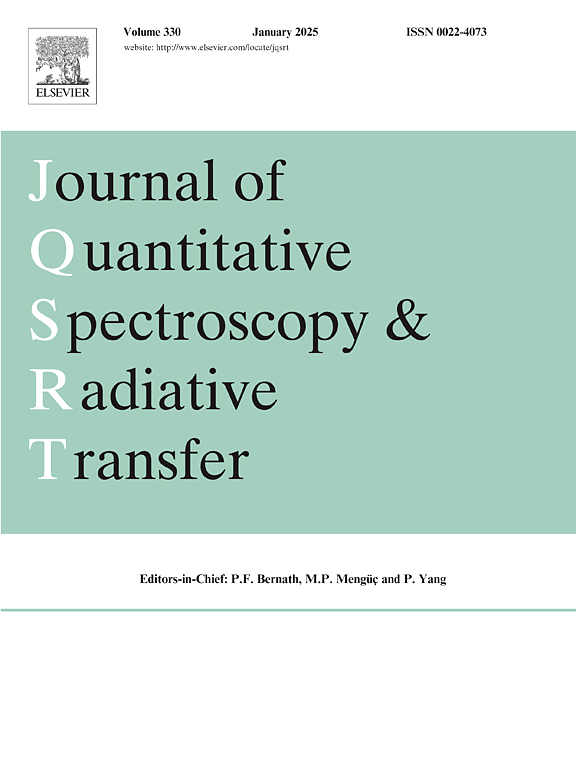The Landé g-factors for the 1s22s22p1/2 and 1s22s22p3/2 states of middle-Z B-like ions: Importance from negative energy states
IF 2.3
3区 物理与天体物理
Q2 OPTICS
Journal of Quantitative Spectroscopy & Radiative Transfer
Pub Date : 2025-03-11
DOI:10.1016/j.jqsrt.2025.109413
引用次数: 0
Abstract
In this work, we calculate the Landé g-factors for the and states in B-like systems with nuclear charges ranging from 10 to 20. Our method starts with the Dirac–Coulomb–Breit Hamiltonian, incorporating electron correlation effects from both negative-energy and positive-energy states using third-order many-body perturbation theory, and including leading-order quantum electrodynamics (QED) corrections through an approximate method. A key aspect of this research is to elucidate the role played by negative-energy states in determining Landé g-factors for B-like ions. Our findings reveal that negative-energy states are crucial for accurately evaluating the Landé g-factors for these states. The contributions from negative-energy states and positive-energy states are of similar magnitude but with opposite signs, resulting in a significant cancellation. The accuracy of our calculations is verified by comparing our results with available experimental results, showing good agreement. This work may serve as a valuable reference for future precise calculations of Landé g-factors in heavy atomic systems.
中z类b离子1s22s22p1/2和1s22s22p3/2态的land因子:来自负能态的重要性
在这项工作中,我们计算了核荷Z为10 ~ 20的类b体系中1s22s2 2p1/2和1s22s2 2p3/2态的land g因子。我们的方法从Dirac-Coulomb-Breit哈密顿量开始,利用三阶多体摄动理论结合负能态和正能态的电子相关效应,并通过近似方法包括前阶量子电动力学(QED)修正。本研究的一个关键方面是阐明负能态在确定类b离子的land g因子中所起的作用。我们的研究结果表明,负能量状态对于准确评估这些状态的land g因子至关重要。负能态和正能态的贡献大小相似,但符号相反,导致显著抵消。通过与已有实验结果的比较,验证了计算的准确性,结果吻合较好。本研究为今后重原子系统中land g因子的精确计算提供了有价值的参考。
本文章由计算机程序翻译,如有差异,请以英文原文为准。
求助全文
约1分钟内获得全文
求助全文
来源期刊
CiteScore
5.30
自引率
21.70%
发文量
273
审稿时长
58 days
期刊介绍:
Papers with the following subject areas are suitable for publication in the Journal of Quantitative Spectroscopy and Radiative Transfer:
- Theoretical and experimental aspects of the spectra of atoms, molecules, ions, and plasmas.
- Spectral lineshape studies including models and computational algorithms.
- Atmospheric spectroscopy.
- Theoretical and experimental aspects of light scattering.
- Application of light scattering in particle characterization and remote sensing.
- Application of light scattering in biological sciences and medicine.
- Radiative transfer in absorbing, emitting, and scattering media.
- Radiative transfer in stochastic media.

 求助内容:
求助内容: 应助结果提醒方式:
应助结果提醒方式:


